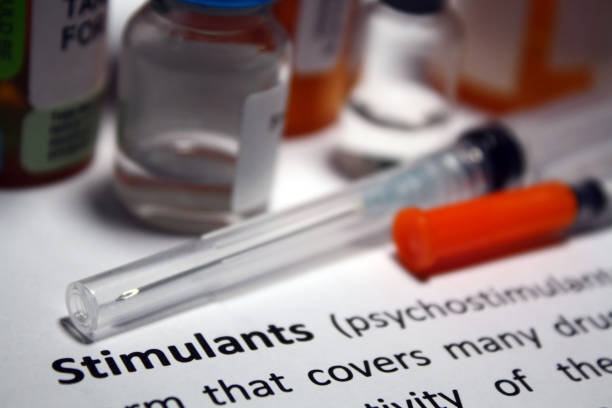Does Modafinil Help or Worsen Anxiety? Here’s What Studies Show
Modafinil is a wakefulness-promoting drug primarily prescribed for narcolepsy but increasingly used off-label for cognitive enhancement. While some users report improved focus and alertness, others experience heightened anxiety. The question remains: does modafinil help with anxiety, or does it make it worse? The answer depends on dosage, individual differences, and underlying conditions.
Does Modafinil Cause or Reduce Anxiety?
The effects of modafinil on anxiety are highly individualized, with research showing both anxiogenic (anxiety-inducing) and anxiolytic (anxiety-reducing) effects.
Studies Supporting Anxiogenic Effects (Increases Anxiety)
- Randall et al. (2003) tested modafinil on healthy volunteers at doses ranging from 100 mg to 800 mg. The study found that participants experienced increased anxiety, particularly after cognitive testing, suggesting that modafinil may heighten stress responses in demanding situations.
- Taneja et al. (2007) conducted a double-blind study where 400 mg of modafinil was administered to healthy adults. The results showed an increase in both positive and negative affect, meaning participants felt more energized but also more anxious and jittery.
Studies Supporting Anxiolytic Effects (Reduces Anxiety)
- Rasetti et al. (2010) found that 100 mg of modafinil for 7 days reduced amygdala reactivity to fearful stimuli, suggesting a potential anxiolytic effect in certain contexts. This indicates that modafinil may help some individuals manage fear responses more effectively.
- The FDA-approved label for Provigil (modafinil) notes that nervousness and anxiety are reported side effects, but not in all users.
Factors That Influence Modafinil’s Effect on Anxiety
The conflicting evidence suggests that modafinil’s impact on anxiety depends on several factors:
1. Dosage Matters
- Lower doses (100 mg or less) appear to have fewer reports of anxiety and may even reduce stress in some users (Rasetti et al., 2010).
- Higher doses (400 mg and above) are more likely to trigger anxiety, jitteriness, and nervousness (Taneja et al., 2007).
2. Individual Differences
- People with a predisposition to anxiety disorders may experience increased anxiety, while others may feel more in control (Randall et al., 2003).
- Genetic factors and differences in dopamine regulation could explain why some individuals tolerate modafinil well while others experience negative side effects.
3. Context of Use
- Modafinil may increase performance-related anxiety when used in high-pressure cognitive tasks (Randall et al., 2003).
- However, in controlled settings, it may help reduce fear responses (Rasetti et al., 2010).
Can Modafinil Be Used to Treat Anxiety Disorders?
While modafinil is not approved as an anxiety treatment, some research has explored its potential as a cognitive enhancer in anxiety disorders.
- Hofmann et al. (2014) reviewed cognitive enhancers for anxiety disorders and found that while d-cycloserine, cortisol, and yohimbine had the most empirical support, modafinil’s role remains uncertain.
- The review suggests that modafinil may improve cognitive flexibility in patients undergoing exposure therapy for anxiety disorders, but it is not a standalone anxiolytic.
Key Takeaway:
Modafinil should not be used as a primary treatment for anxiety disorders. However, under medical supervision, it may have potential as an adjunct to cognitive therapies, particularly for conditions like PTSD and social anxiety disorder.
Final Verdict: Should You Use Modafinil If You Have Anxiety?
Pros:
✅ May improve focus and cognitive flexibility in some individuals
✅ Might help reduce fear responses in controlled conditions
✅ Lower doses (≤100 mg) may have fewer anxiety-related side effects
Cons:
❌ Higher doses (≥400 mg) are linked to increased anxiety and nervousness
❌ Individuals with pre-existing anxiety disorders may experience worsened symptoms
❌ Modafinil is not an FDA-approved anxiety treatment
Recommendation:
- If you have a history of anxiety disorders, approach modafinil with caution and consult a doctor first.
- If you experience heightened anxiety, consider lowering the dose or discontinuing use.
- Modafinil is best suited for individuals without significant anxiety issues who are looking for cognitive enhancement.
Conclusion
Modafinil’s effects on anxiety are not straightforward—it can be both beneficial and problematic depending on the person, dose, and context. While some research suggests potential benefits for cognitive function in clinical anxiety treatments, there is strong evidence that higher doses can trigger anxiety in healthy users.
For individuals prone to anxiety, traditional treatments such as cognitive-behavioral therapy (CBT) and SSRIs remain the gold standard. Always consult a healthcare professional before using modafinil, especially if you have a history of anxiety.
References
- Randall DC, Shneerson JM, Plaha KK, File SE. Modafinil affects mood, but not cognitive function, in healthy young volunteers. Hum Psychopharmacol. 2003 Apr;18(3):163-73. doi: 10.1002/hup.456. PMID: 12672167.
- Rasetti R, Mattay VS, Stankevich B, Skjei K, Blasi G, Sambataro F, Arrillaga-Romany IC, Goldberg TE, Callicott JH, Apud JA, Weinberger DR. Modulatory effects of modafinil on neural circuits regulating emotion and cognition. Neuropsychopharmacology. 2010 Sep;35(10):2101-9. doi: 10.1038/npp.2010.83. Epub 2010 Jun 16. PMID: 20555311; PMCID: PMC3013347.
- Taneja I, Haman K, Shelton RC, Robertson D. A randomized, double-blind, crossover trial of modafinil on mood. J Clin Psychopharmacol. 2007 Feb;27(1):76-9. doi: 10.1097/jcp.0b013e31802eb7ea. PMID: 17224718.
- Hofmann SG, Fang A, Gutner CA. Cognitive enhancers for the treatment of anxiety disorders. Restor Neurol Neurosci. 2014;32(1):183-95. doi: 10.3233/RNN-139002. PMID: 23542909.
- U.S. Food and Drug Administration. (2007). PROVIGIL® (modafinil) tablets [prescribing information]. U.S. Department of Health and Human Services. Retrieved from https://www.accessdata.fda.gov/drugsatfda_docs/label/2007/020717s020s013s018lbl.pdf








